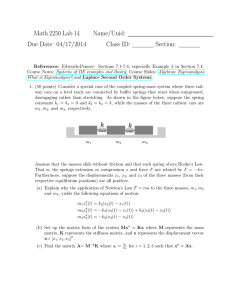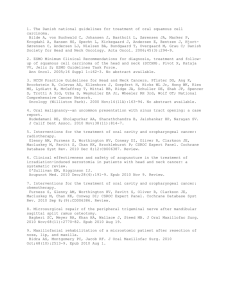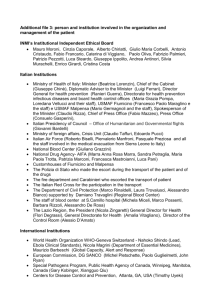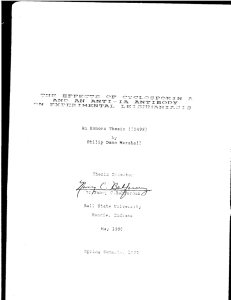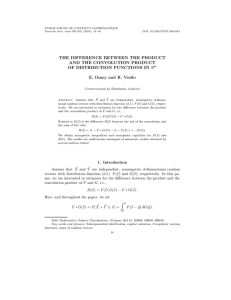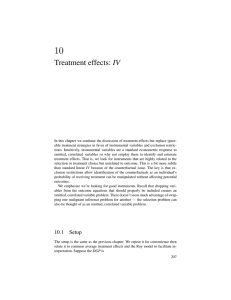Math 442 Assignment 6 - Spring 2015 Due Friday, March 27th
advertisement
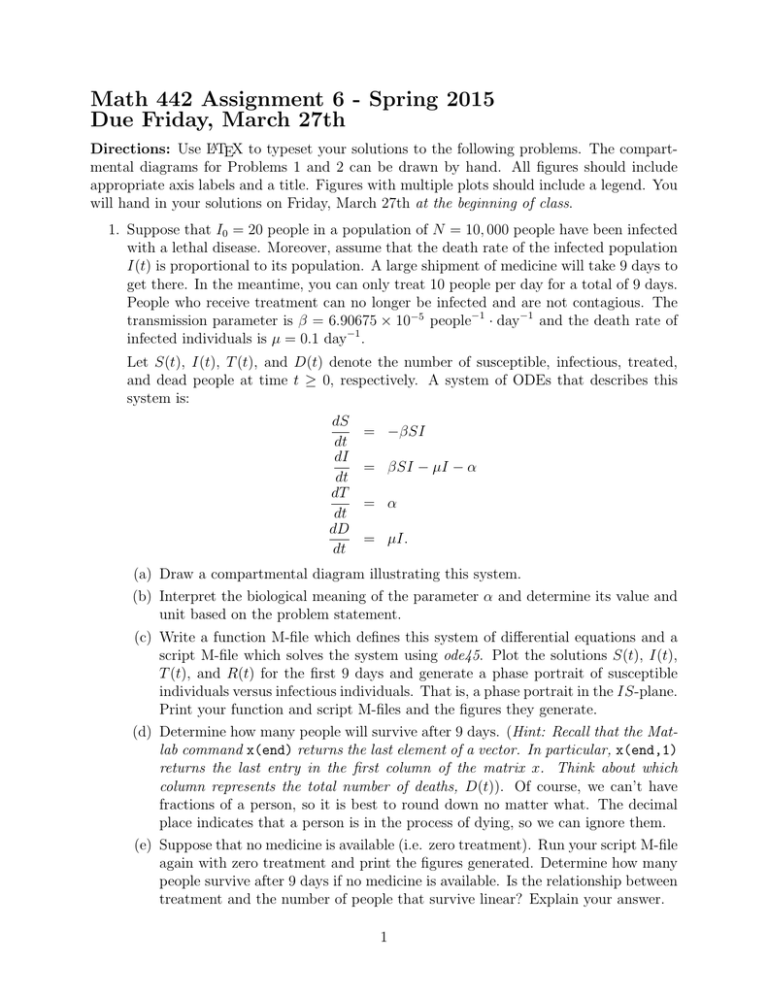
Math 442 Assignment 6 - Spring 2015 Due Friday, March 27th Directions: Use LATEX to typeset your solutions to the following problems. The compartmental diagrams for Problems 1 and 2 can be drawn by hand. All figures should include appropriate axis labels and a title. Figures with multiple plots should include a legend. You will hand in your solutions on Friday, March 27th at the beginning of class. 1. Suppose that I0 = 20 people in a population of N = 10, 000 people have been infected with a lethal disease. Moreover, assume that the death rate of the infected population I(t) is proportional to its population. A large shipment of medicine will take 9 days to get there. In the meantime, you can only treat 10 people per day for a total of 9 days. People who receive treatment can no longer be infected and are not contagious. The transmission parameter is β = 6.90675 × 10−5 people−1 · day−1 and the death rate of infected individuals is µ = 0.1 day−1 . Let S(t), I(t), T (t), and D(t) denote the number of susceptible, infectious, treated, and dead people at time t ≥ 0, respectively. A system of ODEs that describes this system is: dS dt dI dt dT dt dD dt = −βSI = βSI − µI − α = α = µI. (a) Draw a compartmental diagram illustrating this system. (b) Interpret the biological meaning of the parameter α and determine its value and unit based on the problem statement. (c) Write a function M-file which defines this system of differential equations and a script M-file which solves the system using ode45. Plot the solutions S(t), I(t), T (t), and R(t) for the first 9 days and generate a phase portrait of susceptible individuals versus infectious individuals. That is, a phase portrait in the IS-plane. Print your function and script M-files and the figures they generate. (d) Determine how many people will survive after 9 days. (Hint: Recall that the Matlab command x(end) returns the last element of a vector. In particular, x(end,1) returns the last entry in the first column of the matrix x. Think about which column represents the total number of deaths, D(t)). Of course, we can’t have fractions of a person, so it is best to round down no matter what. The decimal place indicates that a person is in the process of dying, so we can ignore them. (e) Suppose that no medicine is available (i.e. zero treatment). Run your script M-file again with zero treatment and print the figures generated. Determine how many people survive after 9 days if no medicine is available. Is the relationship between treatment and the number of people that survive linear? Explain your answer. 1 (f) Suppose that no medicine is available. Plot S(t), I(t), T (t), and D(t) over a long period, say 200 days. Print the figure generated. Determine how many people will survive. (g) Now suppose that you can treat 10 people per day. Plot S(t), I(t), T (t), and D(t) over 200 days. Print the figure generated. Explain what goes wrong when you do this. (h) Add an if/else statement in your function M-file to account for the issue in the previous problem. (Hint: Consider a statement of the form if x(2)>0 ... else ...). Plot S(t), I(t), T (t), and D(t) over 200 days. Print your edited function M-file and the figure generated by your script. Determine how many people will survive. How effective was the treatment campaign? In particular, what is the difference in how many people survived with and without treatment? 2. Suppose you have a disease with a latent period of infection. When you are exposed to the disease, you are infected, but not infectious. You can be treated when infectious and become susceptible again, or recover naturally and have temporary immunity. Once your immunity wears off, you become susceptible again. Let S(t), E(t), I(t), and R(t) denote the number of susceptible, exposed (infected but not infectious), infectious, and recovered individuals at time t ≥ 0 respectively. Suppose that the rate of treatment is proportional to the number of infectious individuals, I(t). Draw a compartmental diagram illustrating this system and determine the corresponding system of differential equations. 2
